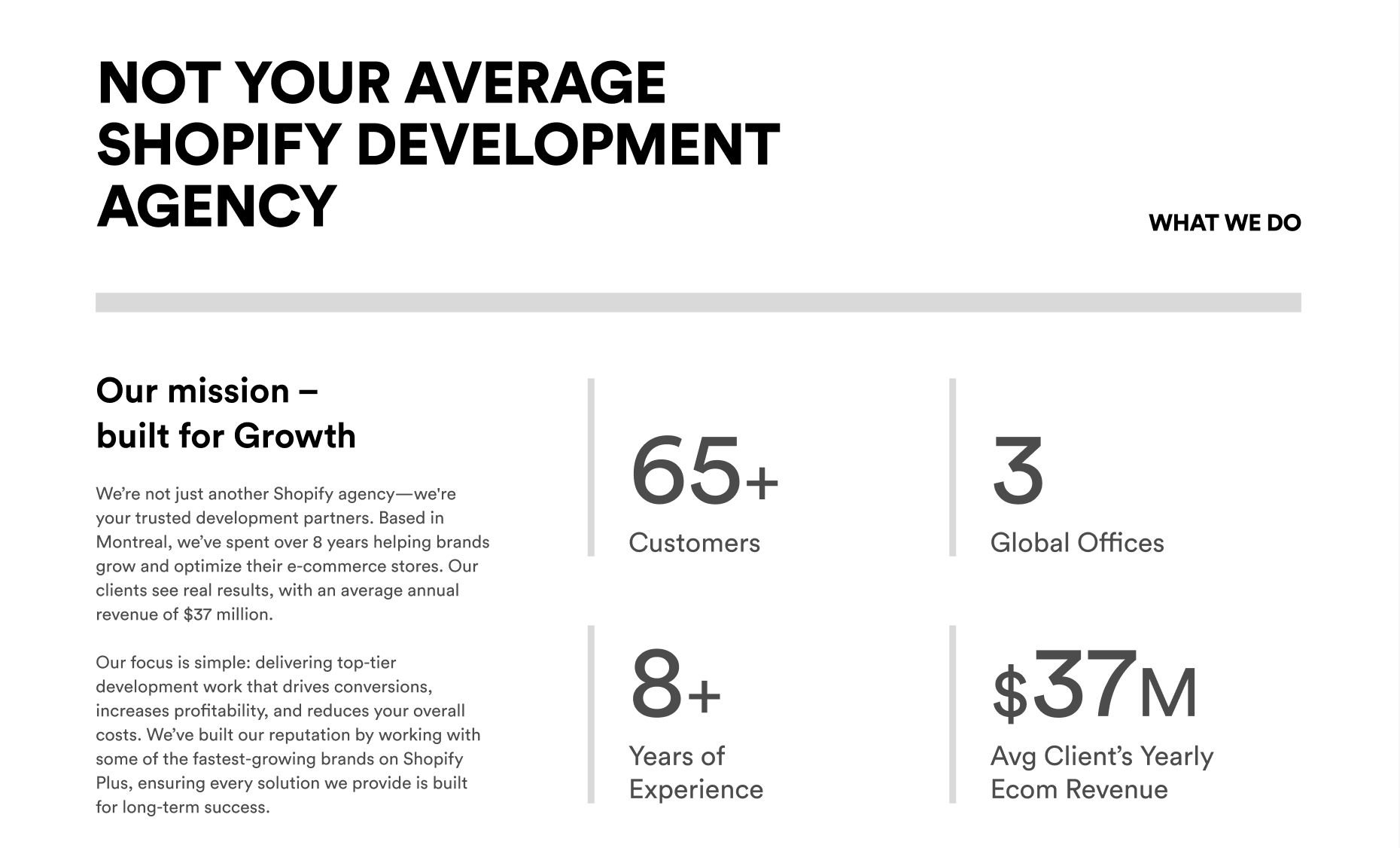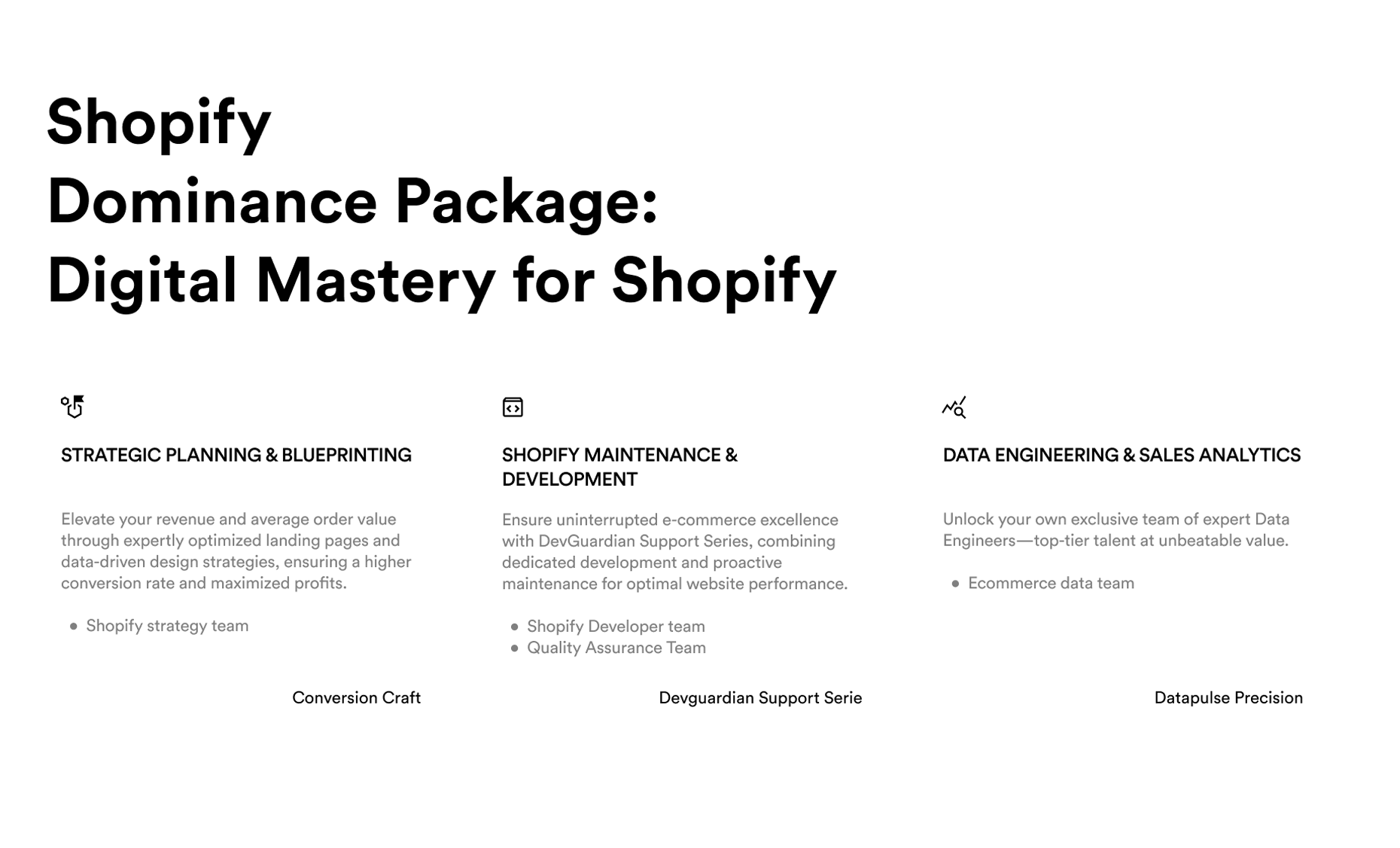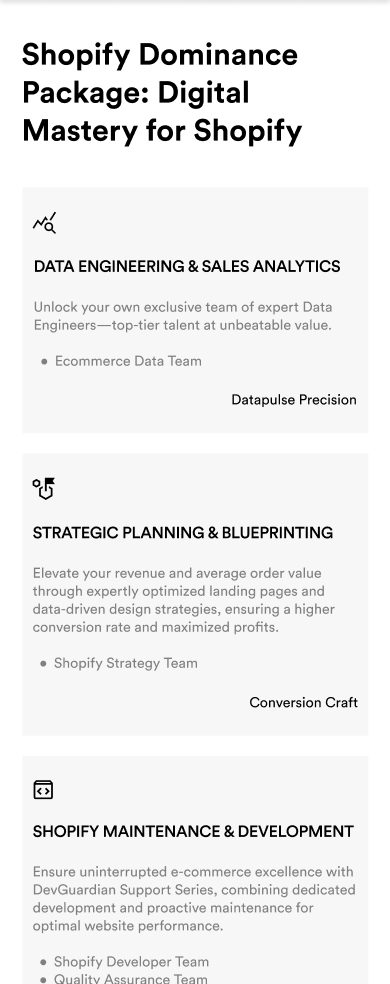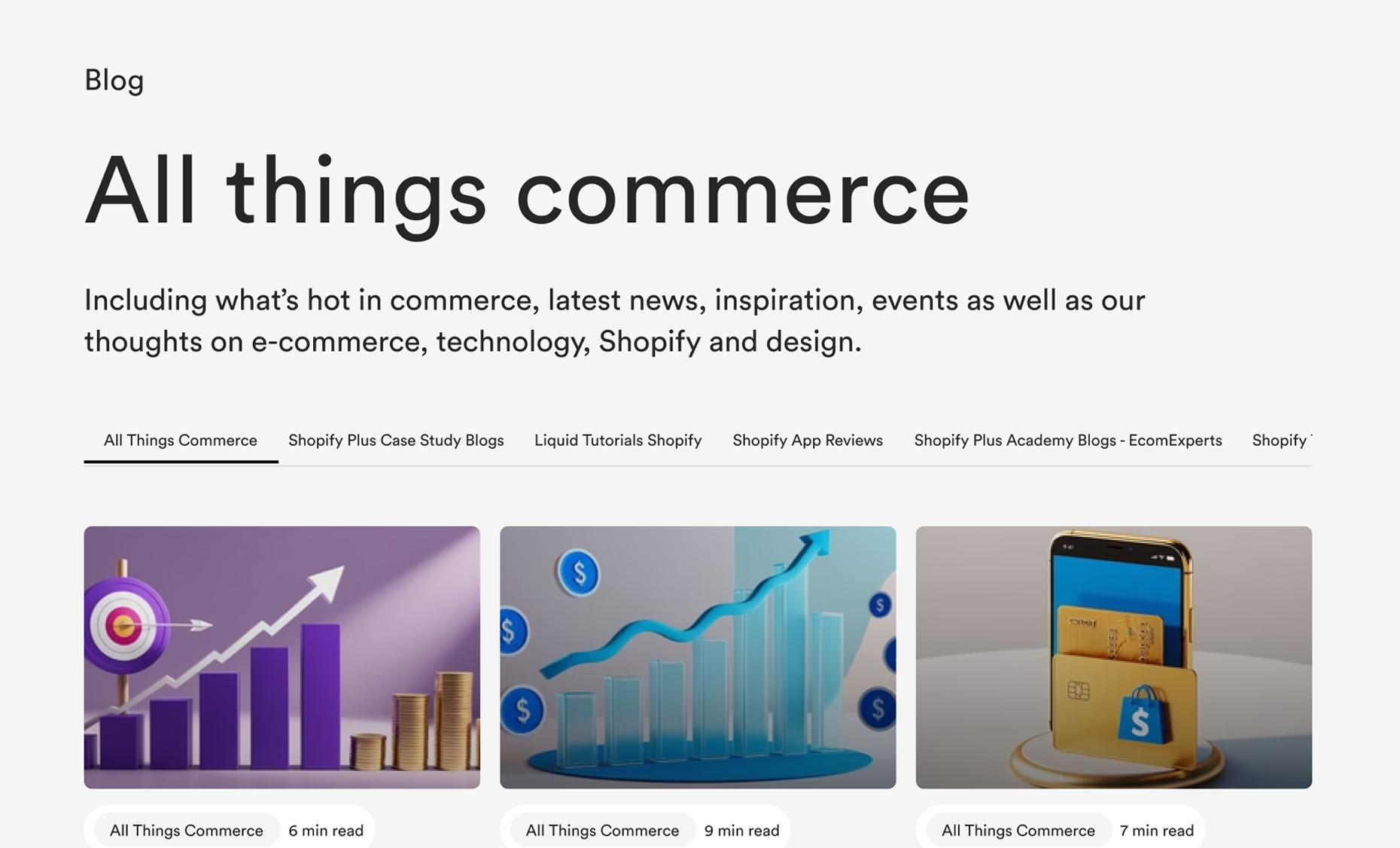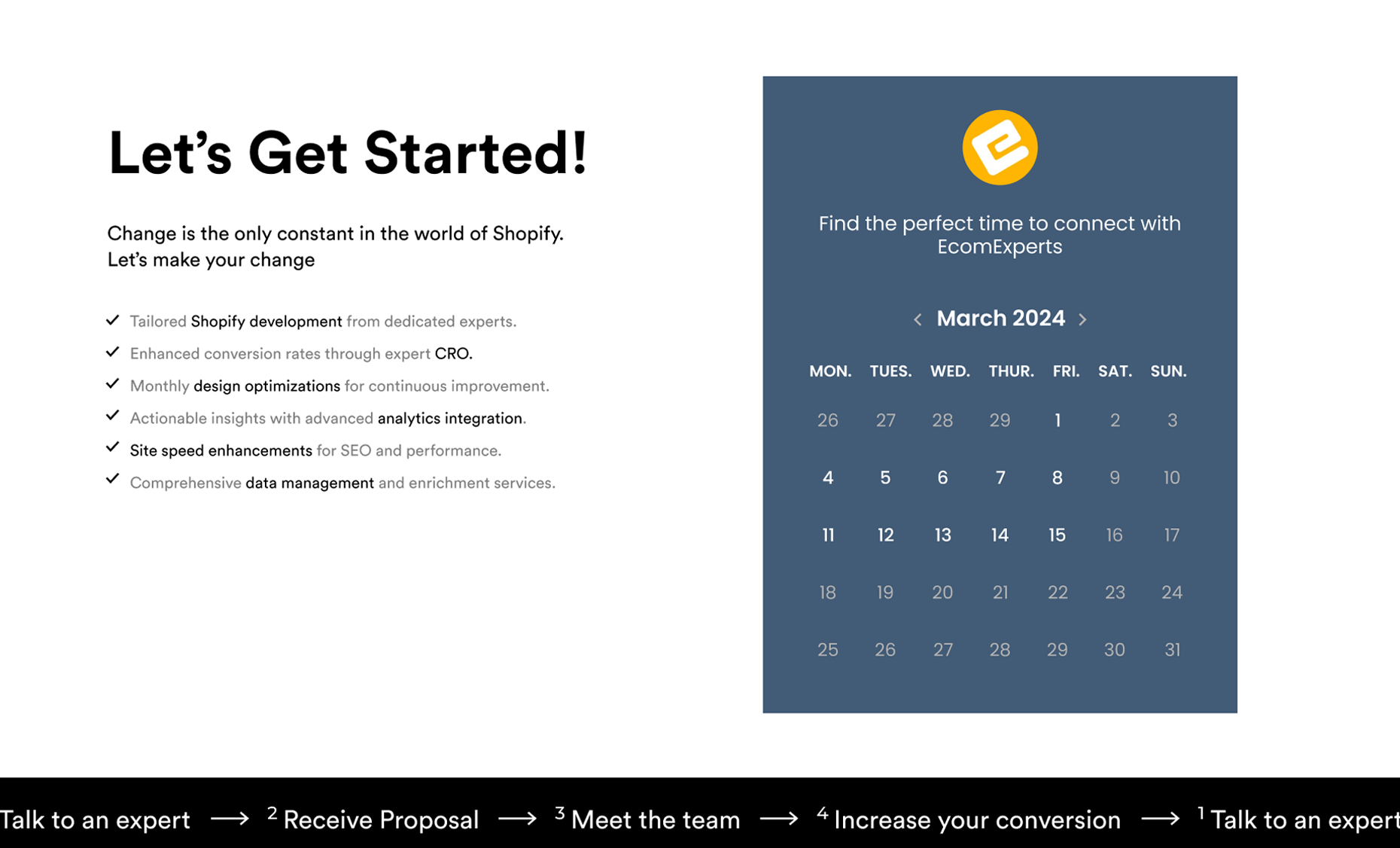
Learn how to harness the full potential of marketing mix models on Shopify to optimize your business strategy.
In the world of e-commerce, businesses are constantly seeking effective strategies to drive sales and increase profitability. One powerful tool that can help achieve these goals is marketing mix models. Today, in this article, we will explore the concept of marketing mix models and how they can be integrated with the popular e-commerce platform, Shopify. We will also discuss the advantages of using marketing mix models on Shopify, the challenges that may arise, and the future trends in this field. So, let's dive in!
Understanding Marketing Mix Models
Marketing mix models, also known as MMM or simply mix models, are analytical tools that help businesses understand the impact of their marketing efforts on sales and profitability. These models allow businesses to quantify the contribution of each marketing channel, such as advertising, promotions, and pricing, to the overall success of their marketing strategy. By analyzing historical data and applying statistical techniques, marketers can uncover valuable insights and make data-driven decisions to optimize their marketing mix.
So, why are marketing mix models important in the realm of e-commerce? Let's find out.
The Concept of Marketing Mix Models
Marketing mix models are based on the idea that a company's marketing activities can be broken down into several controllable variables, often referred to as the "four Ps": product, price, promotion, and place. These variables interact with each other to shape consumer behavior and influence buying decisions. By understanding how changes in these variables impact sales, businesses can allocate their marketing budgets more effectively and achieve better results.
Importance of Marketing Mix Models in E-commerce
In the highly competitive world of e-commerce, it is crucial for businesses to have a clear understanding of the effectiveness of their marketing efforts. Marketing mix models provide the necessary insights to optimize marketing strategies, improve return on investment (ROI), and identify areas for improvement. By accurately quantifying the impact of marketing channels, businesses can allocate their resources to the most effective channels, leading to increased sales and profitability.
Now, let's explore how marketing mix models can be integrated with Shopify, one of the leading e-commerce platforms.
Integration of Marketing Mix Models with Shopify
Shopify, with its robust and user-friendly interface, offers an ideal platform for businesses to integrate marketing mix models into their e-commerce operations. By leveraging the power of Shopify's analytics and reporting capabilities, businesses can easily collect and analyze data from various marketing channels and campaigns.
With the integration of marketing mix models, businesses can gain a comprehensive understanding of the impact of their marketing efforts on key performance indicators (KPIs) such as website traffic, conversion rates, and customer acquisition costs. This deeper level of insight allows businesses to make informed decisions about marketing budget allocation, campaign optimization, and customer targeting.
Furthermore, Shopify's seamless integration with popular marketing tools and platforms enables businesses to streamline their data collection and analysis processes. By automating data extraction and analysis, businesses can save valuable time and resources, allowing them to focus on implementing data-driven strategies and tactics.
In conclusion, marketing mix models play a crucial role in the success of e-commerce businesses. By providing valuable insights into the effectiveness of marketing efforts, these models empower businesses to optimize their marketing strategies, improve ROI, and drive growth in the highly competitive e-commerce landscape. With the integration of marketing mix models into platforms like Shopify, businesses can unlock the full potential of their marketing data and make data-driven decisions that lead to increased sales and profitability.
Integrating Marketing Mix Models with Shopify
Shopify offers a range of features and integrations that make it easy for businesses to implement marketing mix models. Here are the steps to implement marketing mix models on Shopify:

Steps to Implement Marketing Mix Models on Shopify
- Collect Data: The first step is to collect relevant data, including sales data, marketing spend, and other variables that impact sales. This data can be obtained from various sources, such as Google Analytics, Shopify insights, and third-party analytics platforms.
- Choose a Statistical Model: Once the data is collected, businesses need to choose an appropriate statistical model for their marketing mix analysis. This could be a regression-based model, time series analysis, or a more advanced machine learning algorithm.
- Analyze Data and Identify Insights: The next step is to analyze the data using the chosen statistical model. This involves exploring relationships between marketing variables and sales, identifying patterns, and uncovering insights that can be used to optimize marketing strategies.
- Optimize Marketing Mix: Based on the insights gained from the analysis, businesses can make adjustments to their marketing mix. This could involve reallocating resources to more effective channels, optimizing pricing strategies, or refining promotional campaigns.
Now that we know how to implement marketing mix models on Shopify, let's discuss how businesses can customize their models to suit their specific needs.
Customizing Your Marketing Mix Models for Shopify
Every business is unique, and their marketing mix models should reflect that. Shopify provides flexibility for businesses to customize their models to align with their goals and strategies. Here are a few ways businesses can customize their marketing mix models on Shopify:
- Include Additional Variables: Apart from the four Ps, businesses can include additional variables in their models to account for industry-specific factors or unique marketing channels.
- Segment Analysis: Businesses can segment their analysis to gain insights into the effectiveness of marketing efforts for different customer segments. This can help tailor marketing strategies to specific target audiences.
- Real-time Monitoring: Shopify's integration capabilities allow businesses to monitor the impact of marketing efforts in real time. This enables quick adjustments and optimizations based on up-to-date data.
But that's not all! Let's delve deeper into each customization option to understand how businesses can truly make their marketing mix models on Shopify their own.
Include Additional Variables
When it comes to marketing mix models, businesses can go beyond the traditional four Ps (product, price, place, and promotion) and include additional variables that are specific to their industry or marketing strategy. For example, an e-commerce business selling fashion items might consider including variables such as seasonality, fashion trends, or social media engagement. By incorporating these additional variables, businesses can gain a more comprehensive understanding of the factors that influence their sales and make more informed decisions.
Segment Analysis
Segmenting the analysis is another powerful way for businesses to customize their marketing mix models on Shopify. By dividing their customer base into different segments, such as age groups, geographic locations, or purchasing behaviors, businesses can gain insights into the effectiveness of their marketing efforts for each segment. This allows them to tailor their marketing strategies to specific target audiences, delivering more personalized and impactful campaigns. For example, a beauty brand might discover that their social media ads perform better among younger customers, while their email marketing resonates more with older customers. Armed with this knowledge, they can allocate their marketing resources accordingly and optimize their overall marketing mix.
Real-time Monitoring
One of the key advantages of integrating marketing mix models with Shopify is the ability to monitor the impact of marketing efforts in real time. With Shopify's integration capabilities, businesses can track and analyze data as it comes in, allowing them to make quick adjustments and optimizations based on up-to-date information. For example, if a business notices that a particular marketing channel is not performing as expected, they can swiftly reallocate their resources to more effective channels. This real-time monitoring capability empowers businesses to stay agile and responsive in an ever-changing market, maximizing the impact of their marketing strategies.
So, as you can see, Shopify not only provides the tools to implement marketing mix models but also offers businesses the flexibility to customize these models to suit their specific needs. By including additional variables, conducting segment analysis, and leveraging real-time monitoring, businesses can unlock deeper insights and optimize their marketing strategies for success.
Advantages of Using Marketing Mix Models on Shopify
Now that we have covered the implementation and customization aspects, let's explore the advantages of using marketing mix models on Shopify.
Enhancing Your Marketing Strategy with Mix Models
Marketing mix models provide businesses with a deeper understanding of the impact of their marketing efforts. By accurately measuring the effectiveness of different marketing channels, businesses can optimize their marketing strategy and focus their resources on the most profitable channels. This leads to increased ROI and improved overall marketing performance.
Boosting Sales and Profitability with Marketing Mix Models
One of the primary goals of any e-commerce business is to drive sales and increase profitability. Marketing mix models help achieve this by identifying the key drivers of sales and providing actionable insights to improve marketing performance. By allocating resources to the most effective marketing channels, businesses can maximize their sales and profitability.
Overcoming Challenges in Applying Marketing Mix Models

While marketing mix models offer numerous benefits, businesses may encounter challenges during their implementation and application. Let's explore some common pitfalls and how to overcome them.
Common Pitfalls in Marketing Mix Model Implementation
One common pitfall is the lack of quality data. Accurate and comprehensive data is crucial for reliable marketing mix analysis. Businesses need to ensure that they have a robust data collection process in place and regularly audit and validate their data sources.
Solutions for Effective Marketing Mix Model Application
To ensure effective application of marketing mix models, businesses should consider the following solutions:
- Data Integration: Integrate data from multiple sources to get a holistic view of marketing performance.
- Regular Analysis: Conduct regular analysis to keep up with changing market dynamics and fine-tune marketing strategies accordingly.
- Continuous Learning: Stay updated with the latest trends and advancements in marketing mix modeling to leverage new opportunities and stay ahead of the competition.
Future of Marketing Mix Models on Shopify

As technology continues to advance, the field of marketing mix modeling is also evolving. Let's take a glimpse into the future and explore the trends and innovations in marketing mix models for e-commerce.
Trends in Marketing Mix Models for E-commerce
One emerging trend is the integration of machine learning and artificial intelligence algorithms in marketing mix models. These advanced techniques can handle large-scale data and provide more accurate predictions and recommendations for marketing strategies.
Innovations in Shopify Marketing Mix Models
Shopify is at the forefront of innovation in marketing mix modeling. The platform is continuously improving its analytics capabilities, offering businesses more sophisticated tools to analyze and optimize their marketing mix. From advanced segmentation options to real-time monitoring, Shopify is equipping businesses with the necessary tools to stay competitive in the ever-changing e-commerce landscape.
In conclusion, marketing mix models are powerful tools that can unlock the true potential of marketing strategies on Shopify. By understanding the concept of marketing mix models, integrating them with Shopify, and customizing them to suit specific business needs, businesses can enhance their marketing performance, increase sales, and achieve higher profitability. While challenges may arise, businesses can overcome them by addressing common pitfalls and adopting effective solutions. With the future trends and innovations in marketing mix modeling, Shopify remains an essential platform for businesses looking to capitalize on the power of data-driven marketing.




